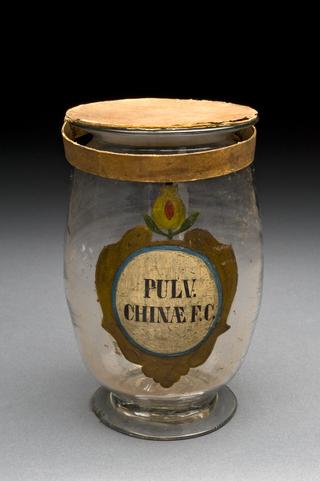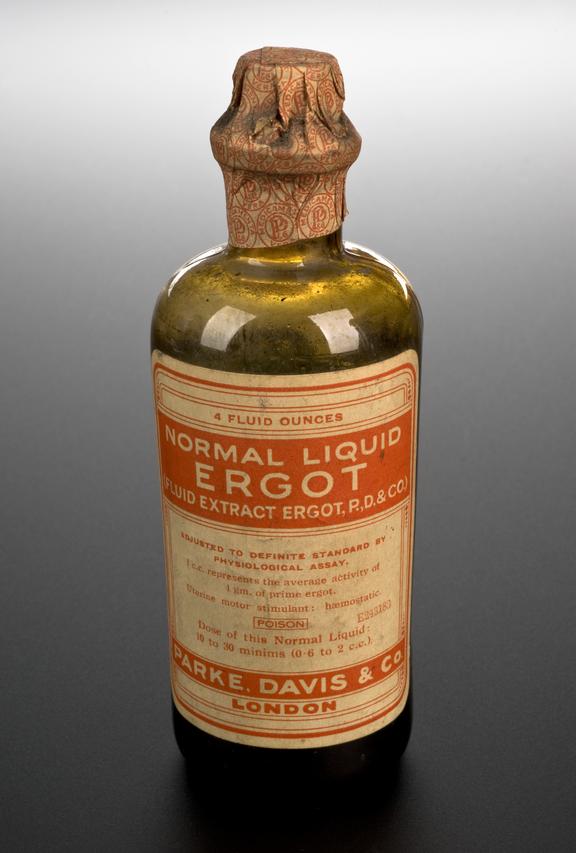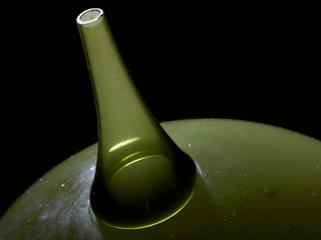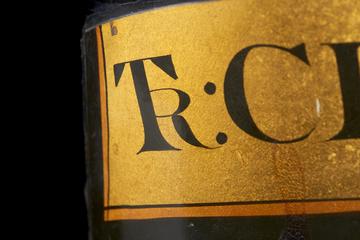
Bottle of ergot extract, London, England, 1891-1950

Bottle of ergot extract, by Parke, Davis and Co., London
Ergot is derived from a fungus and it was used by midwives and doctors in the 1800s to promote contractions in birthing women. Directions on this bottle state the content was only to be used under medical supervision. Ergot also stopped bleeding after childbirth, but was also a traditional remedy to induce abortions. This glass bottle of ergot was manufactured by the London subsidiary of American company Parke, Davis and Co.
Ergot grows naturally on rye and other cereals. Eating too much can cause long-term poisoning, known as ergotism. The condition is sometimes referred to as ‘St Anthony’s fire’. In the past, local outbreaks of ergotism affected towns and villages across Europe. Symptoms include convulsions and hallucinations. The effects of the poison have been historically linked to accusations of witchcraft in affected communities.
Details
- Category:
- Medical Glass-ware
- Collection:
- Sir Henry Wellcome's Museum Collection
- Object Number:
- A640364
- Materials:
- bottle, glass and stopper, cork
- Measurements:
-
overall: 130 mm 45 mm, .21kg
- type:
- ergot




